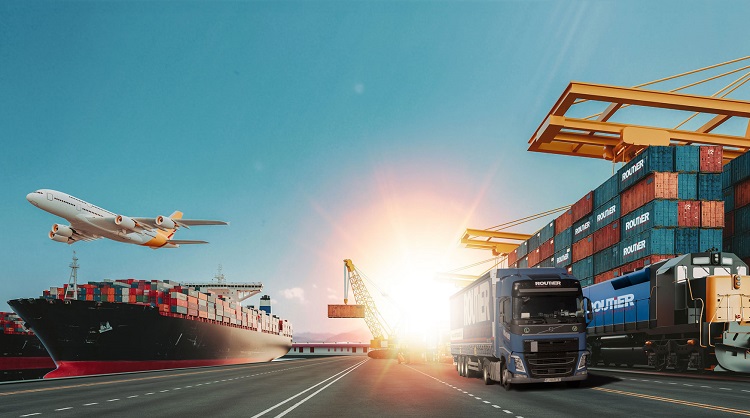Innovative transport solutions are revolutionizing the logistics industry. To explore more information on advanced technologies transforming logistics, visit PutFlix.com. By leveraging cutting-edge technologies and rethinking traditional methods, companies are achieving unprecedented efficiency and reliability in their supply chains. These innovations not only reduce costs but also improve delivery times and enhance customer satisfaction.
A few of these key advancements include autonomous vehicles, drone deliveries, and advanced tracking systems. Autonomous trucks can operate without fatigue, reducing the risk of accidents and delays. Drones provide rapid delivery to remote locations, bypassing traditional infrastructure constraints. Advanced tracking systems give real-time visibility into shipments, allowing companies to respond swiftly to any issues.
Incorporating these technologies into logistics operations isn’t just about staying competitive; it’s about setting new standards of service. Businesses that adopt these innovative transport solutions can operate more agilely and effectively. Adopting these methods creates a win-win situation: saving costs and time while providing superior service.
Table of Contents
Next-Generation Vehicles for Logistics
New advancements in vehicle technology are revolutionizing logistics with electric trucks, drones, autonomous delivery vehicles, and hyperloop cargo systems. These innovations aim to enhance efficiency, reduce costs, and minimize environmental impacts.
Electric Trucks and Drones
Electric trucks are paving the way for sustainable and cost-effective logistics solutions. These vehicles use electric motors powered by batteries, which reduces greenhouse gas emissions and noise pollution. Benefits include:
- Lower operating costs
- Reduced maintenance needs
- Enhanced fuel efficiency
Drones offer a complementary solution for last-mile deliveries. They can navigate traffic-free airways, ensuring swift delivery times. Moreover, drones can access remote or hard-to-reach locations, making them invaluable for certain logistics needs.
Autonomous Delivery Vehicles
Autonomous vehicles are transforming the logistics landscape by integrating AI and machine learning. These vehicles navigate without human intervention, using sensors and cameras to ensure safe traffic movement. Key advantages include:
- Reduced labor costs
- 24/7 operation capabilities
- Increased delivery precision
Companies are actively testing fleets of self-driving delivery vans and robots. Challenges include:
- Regulatory hurdles
- Ensuring cybersecurity
- Navigating complex urban environments
Hyperloop Cargo Transportation
Hyperloop technology proposes an ultra-fast, low-friction transportation system using vacuum tubes. Cargo capsules travel at theoretical speeds of up to 700 mph. Potential benefits are:
- Drastic reduction in transit times
- Lower energy consumption
- Minimal environmental impact
This system is still in the experimental phase but promises to revolutionize long-distance freight transport. By eliminating traditional logistics constraints, hyperloop could offer game-changing efficiency and speed.
These next-generation vehicles are shaping the future of logistics, promising greener, faster, and more cost-effective solutions for global trade.
Infrastructure and Traffic Management
Infrastructure and traffic management are critical components in optimizing logistics efficiency, focusing on the integration of smart systems and strategic urban distribution points. By leveraging advanced technologies and thoughtful planning, transportation networks operate more smoothly and reduce congestion.
Intelligent Transportation Systems
Intelligent Transportation Systems (ITS) utilize various technologies to improve the movement of goods and people. These systems incorporate real-time data, vehicle-to-infrastructure communication, and automated systems.
Key features:
- Real-time traffic monitoring: Sensors and cameras track traffic conditions, providing data to adjust signals and reroute traffic as needed.
- Smart signals: Traffic lights adapt based on current traffic flow, reducing wait times and fuel consumption.
- Automated toll collection: Systems like RFID reduce the need for manual toll booths, speeding up traffic and improving efficiency.
Benefits:
- Reduced congestion: Real-time adjustments help prevent traffic snarls.
- Lower emissions: Smoother traffic flow decreases fuel usage.
- Increased safety: Automated systems can react faster than humans to prevent accidents.
Urban Freight Distribution Hubs
Urban freight distribution hubs are centralized locations centralizing logistics operations within urban areas. These hubs streamline last-mile delivery and reduce congestion in city centers.
Key features:
- Centralized locations: Hubs are strategically placed close to major transportation routes and urban centers.
- Consolidation of goods: Products from various suppliers are grouped together for efficient distribution.
- Cross-docking operations: Goods are quickly transferred from inbound to outbound transportation with minimal storage time.
Benefits:
- Reduced delivery times: Central locations minimize distance for last-mile deliveries.
- Optimized load management: Consolidating goods ensures full vehicle loads, reducing the number of trips needed.
- Lower urban traffic: Fewer delivery trucks on the roads during peak times alleviate congestion.
Through intelligent transportation systems and urban freight hubs, logistics efficiency can be significantly enhanced. These innovations ensure smoother operations, benefiting businesses and communities alike.

